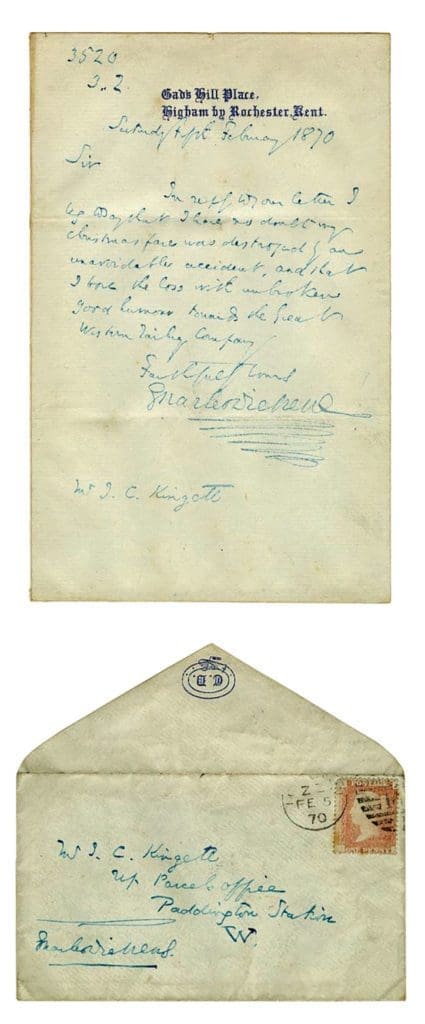
In what might well be as an unexpected ‘sequel’ to Charles Dickens’ definitive seasonal novel A Christmas Carol, a rediscovered letter from the author has revealed that the novelist may have spent his last festive season without the traditional fare of a turkey – because the Great Western Railway had accidentally set it on fire!
A real-life Ghost of Christmas Past has resurfaced in the archives of the National Railway Museum (NRM) at York, in the form of a long-lost letter written by Charles Dickens just a few months before his death in Gads Hill Place, Higham, Kent, on June 9, 1870.
The letter responds to the GWR which accidently set fire to a parcel containing a 30lb turkey which had been destined for Dickens’ dinner table on Christmas Day.
Enjoy more Heritage Railway reading in the four-weekly magazine.
Click here to subscribe & save.
Dated two months after the incident, Dickens replies: “I have no doubt my Christmas fare was destroyed by an unavo¢¢idable accident, and that I bore the loss with unbroken good humour.”

Bleak irony
In the Christmas week of 1869, a horsebox laden with parcels from the Hereford district caught fire near Hanwell station, destroying the contents.
Mr Kingett, superintendent of the GWR Parcels Department at Paddington station, wrote to the senders, one of whom was Dickens, to explain the circumstances and apologise.
Charles Dickens famously survived the Staplehurst rail crash of June 9, 1865 in which 10 people died and 40 were injured.
However, it may never be known as to whether Dickens ever found a replacement turkey for his Christmas dinner.
NRM lead curator Ed Bartholomew said: “Every now and then we are fortunate to uncover a hidden gem in our railway archive, which stretches back more than 200 years.
“Dickens played a key role in popularising the image of Christmas as we know it today, which included the then-luxurious choice of turkey in A Christmas Carol, instead of the more traditional goose.
“The bleak irony of this discovery is that the man who did so much to shape our Christmas experiences may himself have been left with an empty stomach on his last-ever Christmas Day. Hard times indeed.”
Charles Dickens enjoyed a difficult relationship with railways, having famously survived the Staplehurst rail crash of June 9, 1865 in which 10 people died and 40 were injured. He was travelling with his mistress Ellen Ternan when the train derailed on a viaduct. Badly affected by the incident, he died five years to the day after the crash.
However, as one of the most famous celebrities of Victorian times, the railways were a necessary means for him to travel between speaking engagements.
Signed by Dickens
The full text of the letter reads: “Sir, in reply to your letter I beg to say that I have no doubt my Christmas fare was destroyed by an unavoidable accident, and that I bore the loss with unbroken good humour towards the Great Western Railway Company. Faithfully Yours, Charles Dickens.”
The parcel was sent by George Dolby, the manager of Dickens’ reading tours. The letter was kept by Mr Kingett and it was later published in the Great Western Railway Magazine in 1908.
The letter is clearly signed by Charles Dickens and the envelope bears his stamp with the letters C.D.
It is thought to be one of the last items known to have been written by Dickens.
Advert
 Enjoy more Heritage Railway reading in the four-weekly magazine. Click here to subscribe.
Enjoy more Heritage Railway reading in the four-weekly magazine. Click here to subscribe.




